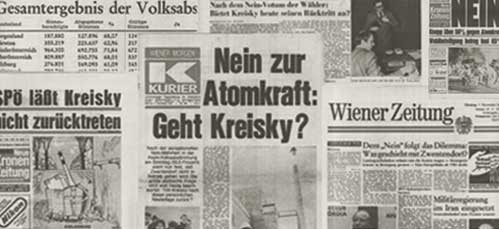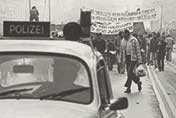As a result of the Zwentendorf referendum, the Austrian National Assembly passed a law prohibiting the use of nuclear energy in Austria (Atomsperrgesetz) in December of 1978. In March 1985 – before the Chernobyl catastrophe which discredited nuclear power in Austria once and for all, yet just seven years after the “referendum’s No” – the shareholders agreed on the “secret liquidation” of the company.

The collecting society began selling fuel rods and other parts of the plant. The trained and qualified employees found new jobs in the energy industry or Germany’s nuclear energy sector. The total costs of the Zwentendorf power plant including everything from maintenance to the “secret liquidation” amounted to 14 billion Austrian shillings (EUR 1.02 billion).
The conflict about the nuclear power plant cut across families and friends. In the context of Zwentendorf, Kreisky – one of the most popular political figures of his time – had pushed his luck and lost by a slim margin. He connected a positive outcome of the referendum with his further role in Austrian politics. The resulting “No” to Zwentendorf did not only affect Austrian energy politics but also represented the birth of the growing environmental movement. Although Kreisky stayed, the NPP Zwentendorf had been stopped.
Highlights
1972: Ground-breaking ceremony at the NPP on 4 April 1972.
1975: Foundation of the “Initiative of Nuclear Power Plant Opponents”.
1976: Hunger strike of mothers from Vorarlberg in front of the Federal Chancellery.
1978: Major protest movement leads to a national referendum. Decision to
prohibit nuclear power in Austria.
1985: GKT shareholders agree on the company’s “secret liquidation”.
1999: A world’s first: people dancing on
a nuclear power plant – Zwentendorf
hosts the Nuke Festival.
2005: EVN purchases the NPP Zwentendorf.
